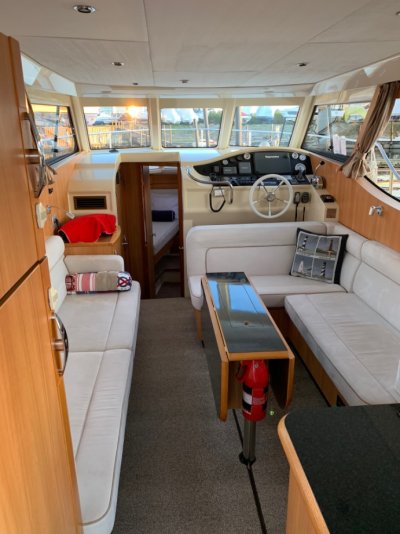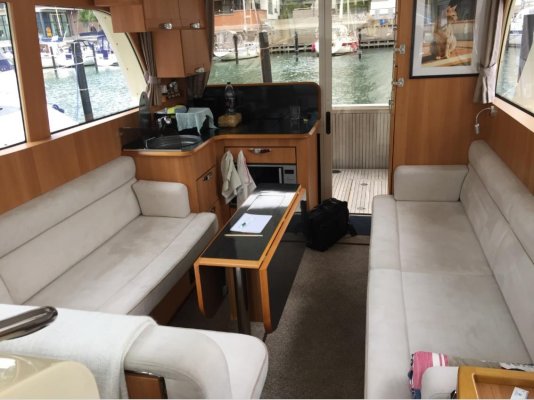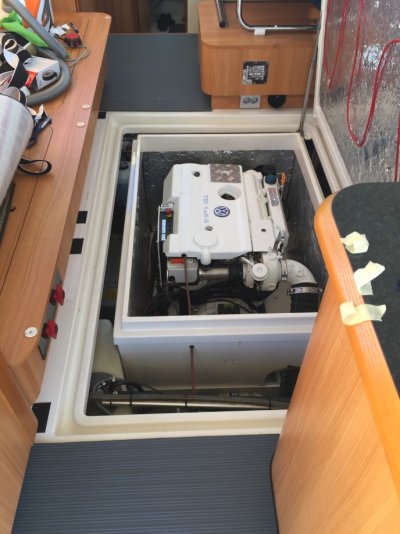ScottC
Guru
- Joined
- Nov 2, 2019
- Messages
- 1,516
- Location
- SWEDEN
- Vessel Name
- ABsolutely FABulous
- Vessel Make
- Greenline 33 Hybrid (2010)
The recent thread on ST44 Daily Engine Checks prompted me to create this thread.
The only way to check the oil level in my 165hp turbo diesel engine is via the dipstick. In order to do this, I must take up the carpet and padding in the main salon and raise a very large and heavy engine hatch (that has the dining table permanently bolted to it). A real PITA.
I thought maybe I could find some type of electro-sensor device I could insert in place of the dipstick, such that I could have an oil-level gauge at the helm. So far, I haven't been able to come up with one. Has anyone ever seen anything like this? Or, does anyone have any alternative solution to suggest?
I have ruled out cutting an access hole in the hatch because the construction of the hatch would not allow me to position such a hole in the necessary location.
Thank you, in advance, for your thoughts on this!
The only way to check the oil level in my 165hp turbo diesel engine is via the dipstick. In order to do this, I must take up the carpet and padding in the main salon and raise a very large and heavy engine hatch (that has the dining table permanently bolted to it). A real PITA.
I thought maybe I could find some type of electro-sensor device I could insert in place of the dipstick, such that I could have an oil-level gauge at the helm. So far, I haven't been able to come up with one. Has anyone ever seen anything like this? Or, does anyone have any alternative solution to suggest?
I have ruled out cutting an access hole in the hatch because the construction of the hatch would not allow me to position such a hole in the necessary location.
Thank you, in advance, for your thoughts on this!




